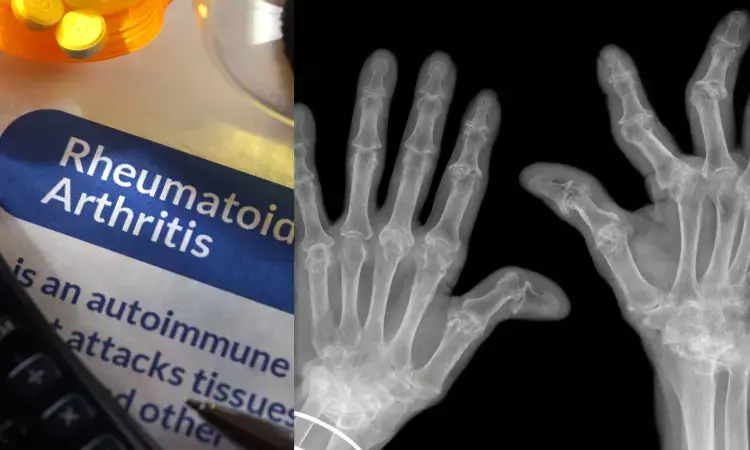- Home
- Medical news & Guidelines
- Anesthesiology
- Cardiology and CTVS
- Critical Care
- Dentistry
- Dermatology
- Diabetes and Endocrinology
- ENT
- Gastroenterology
- Medicine
- Nephrology
- Neurology
- Obstretics-Gynaecology
- Oncology
- Ophthalmology
- Orthopaedics
- Pediatrics-Neonatology
- Psychiatry
- Pulmonology
- Radiology
- Surgery
- Urology
- Laboratory Medicine
- Diet
- Nursing
- Paramedical
- Physiotherapy
- Health news
- Fact Check
- Bone Health Fact Check
- Brain Health Fact Check
- Cancer Related Fact Check
- Child Care Fact Check
- Dental and oral health fact check
- Diabetes and metabolic health fact check
- Diet and Nutrition Fact Check
- Eye and ENT Care Fact Check
- Fitness fact check
- Gut health fact check
- Heart health fact check
- Kidney health fact check
- Medical education fact check
- Men's health fact check
- Respiratory fact check
- Skin and hair care fact check
- Vaccine and Immunization fact check
- Women's health fact check
- AYUSH
- State News
- Andaman and Nicobar Islands
- Andhra Pradesh
- Arunachal Pradesh
- Assam
- Bihar
- Chandigarh
- Chattisgarh
- Dadra and Nagar Haveli
- Daman and Diu
- Delhi
- Goa
- Gujarat
- Haryana
- Himachal Pradesh
- Jammu & Kashmir
- Jharkhand
- Karnataka
- Kerala
- Ladakh
- Lakshadweep
- Madhya Pradesh
- Maharashtra
- Manipur
- Meghalaya
- Mizoram
- Nagaland
- Odisha
- Puducherry
- Punjab
- Rajasthan
- Sikkim
- Tamil Nadu
- Telangana
- Tripura
- Uttar Pradesh
- Uttrakhand
- West Bengal
- Medical Education
- Industry
High sensitivity cardiac troponin T levels tied to swollen joints and disease activity in RA patients

Norway: According to new data, High-sensitivity cardiac troponin T ((hsTnT) levels in inflammatory arthritis (IA) patients were correlated positively with the markers of disease activity like swollen joints and levels of serum tumour necrosis factor.
IA patients suffer a substantial risk of developing coronary heart disease (CHD) independently of conventional risk factors. It is already known that hsTnT is used as a heart disease marker; it is a marker of myocyte necrosis and injury. Previous studies have shown its potential role in inflammation in other body parts, like the joints.
HsTnT is increased in IA patients. The mechanisms remain unclear, but accumulation suggests inflammation and rupture of atherosclerotic plaques.
Considering the background mentioned above, researchers hypothesized that “hsTnT levels correlate with systemic inflammatory and clinical markers for Inflammatory Arthritis disease activity and may be influenced by antirheumatic therapy.”
The researchers assessed 115 patients with active IA before and after using methotrexate (MTX) alone or tumour necrosis factor inhibitor (TNFi) with or without MTX co-medication (TNFi±MTX). The clinical and laboratory parameters were evaluated at baseline and after six weeks and six months of treatment.
Results:
· 64 patients had rheumatoid arthritis (RA), 31 psoriatic arthritis and 20 ankylosing spondylitis.
· Considering disease activity markers, baseline hsTnT levels positively correlated with Physicians’ Global Assessment Score of disease activity in the total patient cohort.
· In the RA group, there was a positive correlation of hsTnT with swollen joints, Disease Activity Score for 28 joints with ESR and serum tumour necrosis factor levels.
· At baseline, the median hsTnT was 5.0 ng/L, and did not change significantly at 6-week visit and 6-month visit with the value of 6.0 ng/L with either antirheumatic therapy.
Thao H. P. Nguyen from Lillehammer Hospital for Rheumatic Diseases said that when high-risk patients are identified early, it may facilitate precision medicine as an intervention for inflammatory arthritis comorbidity.
Concluding further, there was a correlation between HsTnT levels and inflammatory markers for IA disease activity. Following antirheumatic treatment, there were changes in the inflammatory markers, but hsTnT did not change during the 6-month follow-up period.
Further reading:
Nguyen THP, Fagerland MW, Hollan I, Whist JE, Feinberg MW, Agewall S. High-sensitivity cardiac troponin T is associated with disease activity in patients with inflammatory arthritis. PLoS One. 2023 Feb 10;18(2):e0281155. doi: 10.1371/journal.pone.0281155.
BDS, MDS in Periodontics and Implantology
Dr. Aditi Yadav is a BDS, MDS in Periodontics and Implantology. She has a clinical experience of 5 years as a laser dental surgeon. She also has a Diploma in clinical research and pharmacovigilance and is a Certified data scientist. She is currently working as a content developer in e-health services. Dr. Yadav has a keen interest in Medical Journalism and is actively involved in Medical Research writing.
Dr Kamal Kant Kohli-MBBS, DTCD- a chest specialist with more than 30 years of practice and a flair for writing clinical articles, Dr Kamal Kant Kohli joined Medical Dialogues as a Chief Editor of Medical News. Besides writing articles, as an editor, he proofreads and verifies all the medical content published on Medical Dialogues including those coming from journals, studies,medical conferences,guidelines etc. Email: drkohli@medicaldialogues.in. Contact no. 011-43720751


